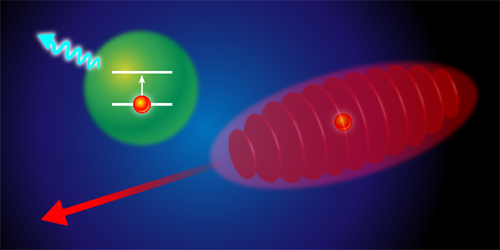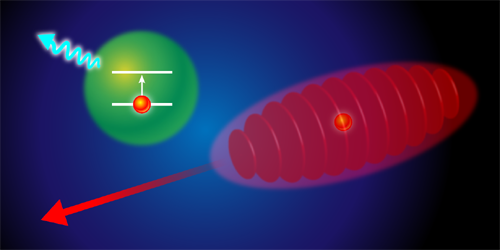Excited by Shaped Electrons
In the last few years, researchers have demonstrated that an electron’s wave function can be shaped with lasers. Now, Avraham Gover of Tel Aviv University, Israel, and Amnon Yariv of the California Institute of Technology, Pasadena, predict that these shaped quantum electron wave packets (QEWs) can excite electron energy transitions in two-level quantum systems (TLQSs), such as atoms, quantum dots, and crystal defects. The approach could be used to design electron microscopes with powerful spectroscopic capabilities, manipulate qubits in quantum computers, and test fundamental physics theories of quantum wave-function collapse.
Illuminating a nanostructure with a laser creates a stationary optical field near to its surface. Experiments show that sending an electron through this field imprints on the QEW a pattern with the same frequency as that of the laser. Gover and Yariv propose that electrons modulated in this way could interact with an electron in a TLQS via their mutual electric fields. If a single QEW passes close to the TLQS, it should impart a kick to a bound electron. If a train of multiple, synchronized QEWs do the same, the bound electron should be excited to a higher energy level. The researchers liken the behavior to that of pushing a swing repeatedly at its resonant frequency.
The duo say that their proposed method could improve cathodoluminescence spectroscopy, where a material’s composition is determined from the light emitted when an excited electron relaxes. Further information about the material’s properties might be gleaned by measuring the residual energy of the QEWs after their interaction. But, the researchers say, achieving all that depends on gaining better control over the QEWs.
This research is published in Physical Review Letters.
–Marric Stephens
Marric Stephens is a freelance science writer based in Bristol, UK.





